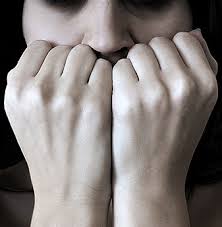Signs & Symptoms of Mixed Anxiety-Depressive Disorder
Anxiety and depression disorders typically carry similar symptoms, which often make it difficult to distinguish one from the other. This makes diagnosing mixed anxiety-depressive disorder especially challenging. In order for mixed anxiety-depressive disorder to be present, existing symptoms cannot meet the diagnosis for only depression or only anxiety. In cases where a person has been diagnosed with one of the following disorders, a mixed anxiety-depressive disorder diagnosis does not apply.
- Dysthymic disorder
- Major depressive disorder
- Panic disorder
- Generalized anxiety disorder
Someone who experiences a recurring or persistent depressive mood for a minimum of one month coupled with other symptoms may be suffering from mixed anxiety-depressive disorder. In general, a persistent or recurring dysphoric mood state must exist for a minimum of four weeks with at least four of the following symptoms:
- Feelings of worthlessness
- Feelings of hopelessness
- Prone to crying
- Persistent worrying
- Lethargy
- Problems sleeping
- Problems concentrating or remembering things
- Anticipating the worst
- Irritability
- Enhanced sensory perceptions
As these symptoms can arise from certain medical conditions or medications, these factors must be ruled out before a diagnosis of mixed anxiety-depressive disorder can be made. Ultimately, the symptoms of this condition impair a person’s ability to function in everyday life.
Risk Factors

Knowing the signs of anxiety-depressive disorder will help you know if you need treatment.
Anxiety disorders, in general, are the most common types of psychological disorders, according to a University of Hawaii report. Within the United States, there’s a 24.9 percent chance of developing an anxiety disorder within a person’s lifetime. For depression disorders, the occurrence rate drops to 17.1 percent within a lifetime.
When paired together, any type of depressive disorder can coexist with anxiety but not vice versa. While mixed anxiety-depressive disorder may include any combination of depression and anxiety symptoms, signs of the condition become most apparent within a person’s overall lifestyle. Someone who develops mixed anxiety-depressive disorder will likely exhibit the following patterns or behaviors:
- Frequent health problems
- Missing school or work on frequent basis
- Cut-off from social activities
- Neglecting his or her appearance
- Alcohol or drug abuse
Causes for mixed anxiety-depressive disorder may stem from a combination of psychological, environmental and biological factors. Risk factors for people most susceptible to developing this condition include:
- Childhood trauma
- No social or family supports
- Poor self-esteem
- Family history of mental health
- Family history of substance addictions
- Ongoing stress
- Poverty
- Avoidant, pessimistic and dependent personality types
Symptoms – Anxiety vs. Depression
Anxiety and depression disorders tend to go hand-in-hand when it comes to the types of symptoms a person experiences. According to an article in the Journal of the American Osteopathic Association, people with major depression disorder typically experience a range of anxiety symptoms:
- 42 percent of people experience physical symptoms of anxiety
- 72 percent of people worry
- 29 percent of people experience panic attacks.
Distinguishing a depression or anxiety disorder from mixed anxiety-depressive disorder is a matter of determining which symptoms carry the most weight. For example, if someone shows symptoms of both conditions but also experiences an overall sense of “I just can’t go on anymore,” a major depression disorder may be at work. Someone with mixed anxiety-depressive disorder will experience symptoms from both conditions in fairly equal intensities.





